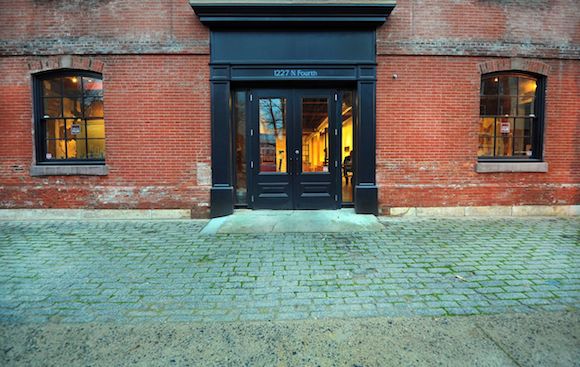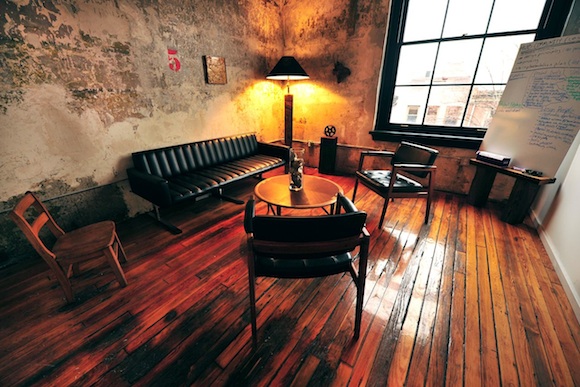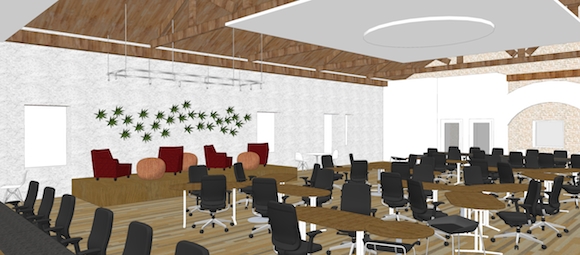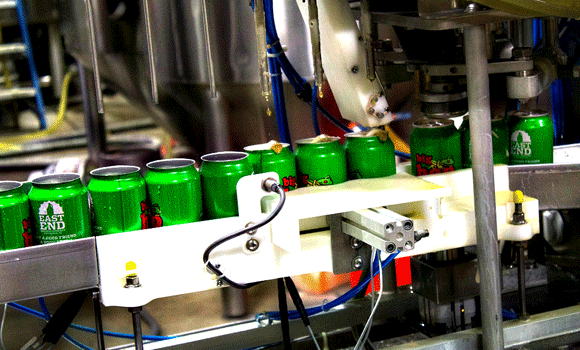Most of us spend more time at work than we do at home. The right desk, an efficient layout, a place to think, a comfortable spot to eat lunch or get a breath of fresh air can all go a long way towards boosting morale, productivity and innovation. The following Pennsylvania companies are all remarkable for the care and ingenuity with which they have crafted their workspaces. The two offices, a factory, a distillery and a co-working space, they all incorporate smart design, thoughtful amenities and sustainable features, sending a clear message: we value our workers.
Slip and Slide
In AWeber Communications' list of core values, number five is “Don’t take ourselves too seriously, have fun.”
The firm's new Chalfont headquarters has two 14-foot slides in the lobby. They're the first thing you see when you enter the building — and CEO Tom Kulzer uses then every day.
“They’re faster than using the stairs and a heck of a lot more fun,” he says.
Fun, along with collaboration, innovation and sustainability, were the key directives Kulzer gave architects Dave Schmauk and Roberta Devlin of Philadelphia's Wulff Architects.
“At the end of the day, people are most productive when they’re happy,” explains Kulzer.
The 70,000-square-foot building includes a host of amenities: a dedicated yoga room, volleyball court, showers, two movie theaters, four video game stations, a pool table, table tennis, foosball and vintage arcade games. Three in-house chefs prepare complimentary lunch everyday for AWeber’s 100 employees in an onsite catering kitchen.
The values reflected in the design of the workspace — interactivity, innovation — are key for the company, which offers e-mail marketing services.
“The whole point was to create a collaborative environment that works best for creative minds,” says Schmauk.
All desks are on wheels so workers can group and regroup. Team rooms enable impromptu discussions and individuals can find privacy in refurbished British phone booths or quiet rooms. The entire office is wireless and all meeting rooms are outfitted with Apple TV to facilitate information sharing. Should the impulse strike, there is over 3,500 square feet of writable wall surface. There are only three private offices — Kulzer works in the open area using the same wheeled workstation as everyone else.
One thing that AWeber took seriously was a commitment to sustainability. The headquarters has a host of green features that save energy and enhance the workspace, such as abundant daylight and large windows, a living wall with over 2,000 plants and a tranquil water feature.
For relaxing by after racing down the slide.
Drink Up
Thanks to a high-design distillery and community outreach, Wigle Whiskey is raising spirits in Pittsburgh.
Two years ago, Wigle outfitted its turn-of-the-century industrial building in the city's happening Strip District in line with a mission that goes beyond making whiskey, gin, rum and bitters using local, heirloom and organic grains.
“We built this distillery on the idea that the whole process should be entirely transparent, community-based and accessible,” explains Wigle's Meredith Grelli.
Wigle hosts events — classes, tours, tastings and community gatherings — almost every day. Annie Chen of Pittsburgh's EDGE Studio/GBBN Architects, designed the space's interior (lauded by the American Institute of Architects Pittsburgh as “playful, cheerful and fun”) with those visitors in mind.
The tasting room, by law, had to be separate from the production area — it is partitioned with transparent walls and a glass garage door. Its ceiling sparkles with real Wigle bottles.
Meanwhile, the production side is clean, bright and shiny. The company's copper “pot” still is a beautiful, sculptural object, imported from a 100-year-old German manufacturer.
Wigle has been so successful that the company is expanding into a North Side building, which will serve as a barrelhouse for aging whiskey and a place for product development. The new space will also include a demonstration garden planted with specimens of the ingredients that go into Wigle's products. Expected to open later this spring, the garden will host events and performances as Wigle continues its own whiskey rebellion.
Going Up
Schindler Elevator Corporation, a global maker of elevators, escalators and moving walks, prides itself on a commitment to sustainability. So, when the company decided to replace an aging plant in Gettysburg with a new facility in Hanover, it went green, achieved gold and kept it cool.
Building from the ground up offered Schindler and architect James E. Baumgardner of Hanover the opportunity to rethink everything, from efficiency and productivity-boosting operational features, to energy and resource-saving design, to the three on-site electric car charging stations that encourage employees and visitors to use low- and zero-emission vehicles. (The plant also has a Chevy Volt company car, which can go up to 900 miles between fill-ups.)
“Sustainability is in our DNA,” says John Impellizzeri, vice president of supply chain for North America.
The 150,000-plus-square-foot plant won coveted LEED Gold certification from the U.S. Building Council, a first for any elevator production facility in North America. Its green features include photovoltaic solar panels that will generate 1.5 million watts of renewable energy (about half the building's total annual power consumption); a zero-discharge wastewater system; energy efficient light fixtures; a reflective-surface parking area and maximum green space on the 23-acre site.
The facility employs 60 and makes “customer-facing” components such as doors, entrances, jambs and elevator cab interiors, using a state-of-the-art, high-performance Italian manufacturing system. Completed at the end of 2013, the plant is humming along with two shifts.
Hanover is serving as a model for other Schindler plants around the world, including buildings at various stages of completion in China, India and Eastern Europe.
“We’re incredibly proud that we are leading the pack,” say Impellizzeri.
Extra! Extra!
The travails of print journalism are well documented. So when the publisher of Harrisburg's Patriot News embraced a new business model, the company moved into a space better suited to a progressive media company.
Remember the iconic newsrooms of The Front Page or All the President's Men? PA Media Group's headquarters in Hampden Township is the opposite. Gone are the rows of desks, the piles of paper, the distant editors in private offices. Instead, the 18,000-square-foot space is filled with cozy couches and informal meeting enclaves, whiteboards, projection and LCD monitors, all designed to enhance digital journalism, collaboration, innovation and community engagement.
About 65 editorial, advertising and production staffers — who once toiled on separate floors — now work together in ever-changing configurations.
“Its all about collaboration and breaking down walls,” says Cate Barron, vice president of content. “We were adamant that we wanted everybody who works for PA Media on one floor.”
There are only a few assigned workstations and only three private offices. Instead, reporters are encouraged to be out on the street covering their beats. When they do come into the office, “they can walk in with their laptop and phone and sit wherever they want,” explains Barron. (Or they can post up at several standing desks.) The couches and meeting spaces foster brainstorming and spur-of-the-moment collaboration.
Since opening last year, the space, designed by Progressive AE of Grand Rapids, Michigan, has inculcated a progressive new culture in the company (which was officially founded in 2012).
“It’s been a huge sea change,” says Barron. “It’s helped to get the whole philosophy across.”
In Bloom
For many years, open plan offices were defined by partially enclosed workstations. This led to the charming phrase “cubicle farm” — not exactly a compliment. More recently came “benching systems,” characterized by long, linear tables intended to promote teamwork.
But the best collaborations happens in the round, says Nambi Gardner of San Francisco's Gardner Design Lab, lead designer for Impact Hub Philly. Gardner is replacing bench-style tables with a system of “Petal Tables,” whose organic shapes, like flower petals, are endlessly reconfigurable and designed to enable both interaction and private work.
“A table just isn’t a table,” says Gardner. “Hub has worked really hard on furnishings that balance collaboration and focus work.”
Impact Hub, a network of 40-plus locations around the world, describes itself as “where change goes to work. Part innovation lab, part business incubator, and part community center, we offer our members a unique ecosystem of resources, inspiration, and collaboration opportunities to grow impact.”
Impact Hub Philly occupies the third floor of a former church turned box factory, turned abandoned building, turned fabrication and co-working space. The Hub originally shared the building, located in the Phildealphia's South Kensington section, with 3rd Ward, a Brooklyn-founded collaborative member-driven space that closed its doors in 2013.
Those Petal Tables are being fabricated downstairs at Third Ward's old woodshop out of eco-friendly bamboo. (At other Hubs, they've been made of reclaimed wood, cardboard, construction salvage and other green materials.)
Made in three sizes, seating from three to nine, the tables are on casters so they can easily be reconfigured. The tops flip so they can be stacked and stored.
Gardner says that modest changes are being made to open up the floor plan; the addition of the Petal Tables will allow for “more flexible and reconfigurable furniture setups so that members can customize their work areas.”
The Petal Tables, she adds, “are becoming a fairly iconic symbol for the Hub.”
ELISE VIDER is news editor of Keystone Edge.
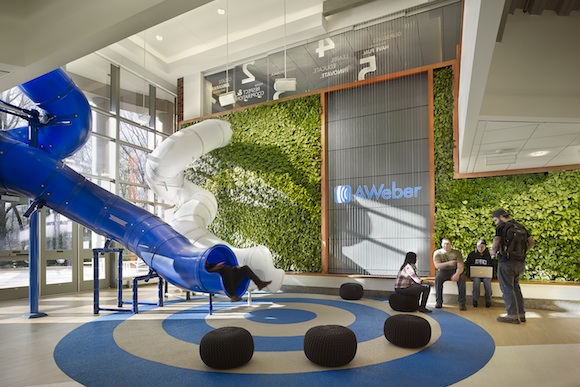

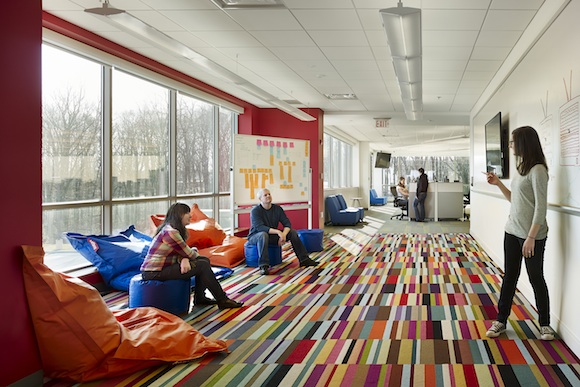
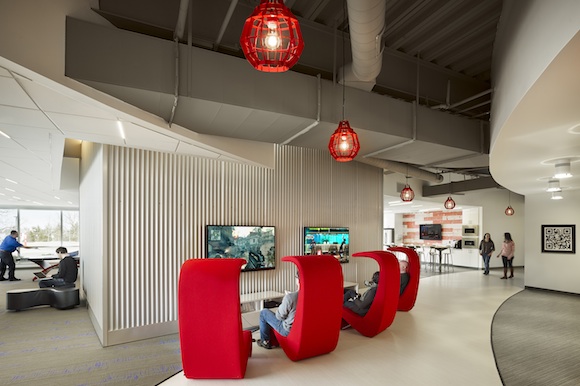

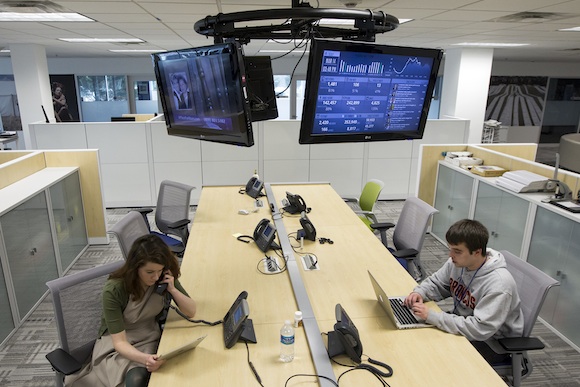
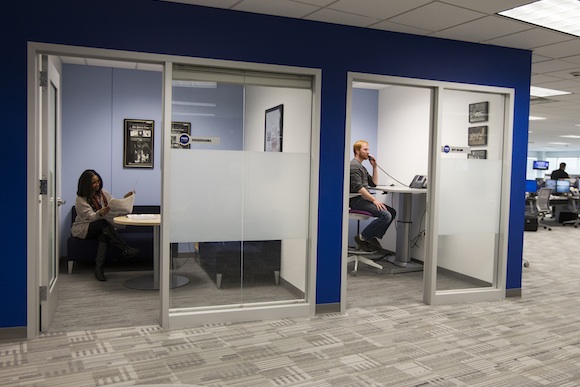

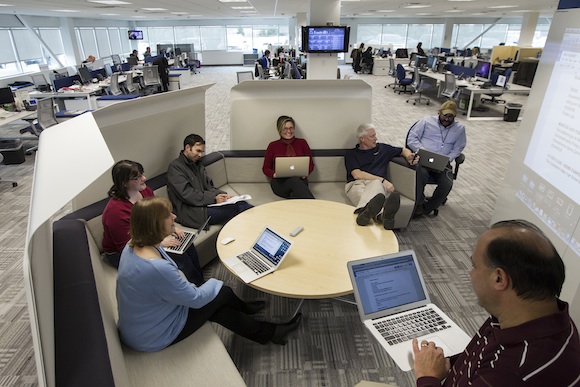

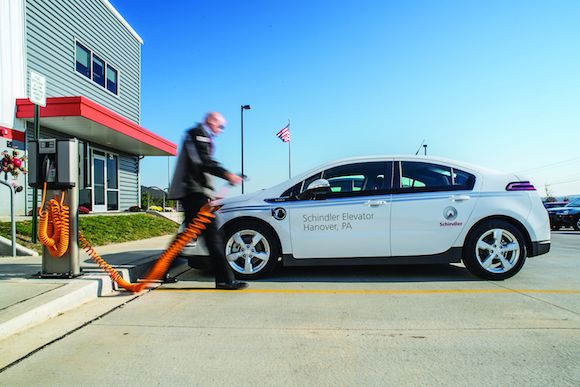

.jpg)
